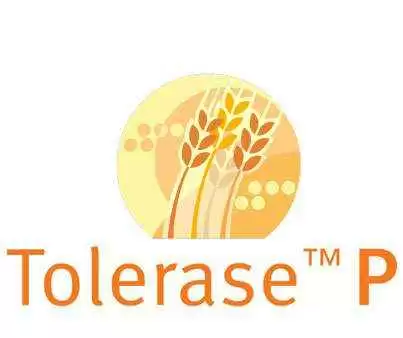
Celiac.com 06/17/2023 - A team at The Royal Melbourne Hospital in Australia is seeking people with celiac disease to test a new product which is potentially capable of rendering gluten innocuous to the lining of the small intestine in celiacs.
FOLLOWING a life long research career studying gluten and its damaging effects in celiac patients, Professor Hugh Cornell, recently retired from the RMIT University, has developed an enzyme extract derived from pig intestine which is potentially capable of rendering gluten innocuous to the lining of the small intestine of celiac patients. The product, called 'Glutazyme' is now ready for clinical trial. A team at The Royal Melbourne Hospital is seeking people with celiac disease to test the product in a carefully conducted trial.
Celiac.com Sponsor (A12):
'Glutazyme' was developed on the basis of the theory that celiac patients lack an enzyme in the intestine which when present in normal people, is capable of fully digesting gluten. When intestinal enzyme extracts from celiac patients are added to gluten in the test tube, gluten is incompletely digested, leaving gluten fragments that are toxic to the lining of the small intestine. These semi-digested fragments produce flattening of the villi (finger like projections essential for proper absorption of nutrients) and quite a striking immunological reaction in the bowel, both of which are characteristic findings on biopsy specimens from celiac patients consuming a normal, gluten-containing diet
However, added gluten does not damage the lining cells in the presence of the enzyme extract, compared in the same test tube system to gluten without the enzyme, when damage occurs.
In addition, when a group of celiac patients were given a small dose of gluten together with the enzyme extract, fewer symptoms (diarrhea, bloating, pain) developed compared to what occurred in the same subjects challenged with gluten but not protected with the enzyme extract.
Professor Cornell supported his research by characterizing which sequences of amino acids in gluten actually cause the damage in the test tube studies, and showed that these sequences are digested to simpler peptides (short sequences of amino acids) by enzymes present in the extract. Then he showed that these simple peptides were harmless to the intestine of celiac patients in his experimental test tube studies. These peptide sequences are present in wheat, barley and rye - all cereals well known to cause damage in celiac patients.
A research consortium has been established which also includes Dr. Ted Stelmasiak (a biopharmaceutical expert), Professor Finlay Macrae from the Department of Gastroenterology and Head of Colorectal Medicine and Genetics at The Royal Melbourne Hospital, and Dr. Bob Anderson from the Walter and Eliza Hall Institute and Department of Gastroenterology, RMH. The team is now ready to further evaluate the product in celiac patients.
The research is pitched at testing the product's ability to protect celiac patients from the damaging effects of small amounts of gluten in the diet. At present, it is foreseen that the product might be an adjunct to a gluten free diet, to help celiac patients who are sensitive to trace amounts of gluten, and to protect celiac patients from the effects of gluten introduced by accident, such as can occur while eating away from home. Potentially, the product might add immeasurably to the quality of life of celiac patients and reduce the nutritional consequences and complications of inadvertent exposure to gluten, but carefully controlled trials are needed to be sure of the efficacy of the product.
It is essential that the product is thoroughly assessed: hence the trial will involve not only evaluating symptoms and their suppression by the enzyme extract, but also measure transglutaminase antibodies (one of the specific blood tests used to diagnose, and assess dietary compliance in, celiac patients). A smaller group of the participants will also undergo gastroscopy and small bowel biopsy before and after the gluten challenges (with and without the extract), so as to be quite sure that the product is capable of preventing any of the intestinal immune reactions typically seen in celiac patients on gluten-containing diets.
By the nature of the research process which addresses the barriers of knowledge, there may of course be a null (no benefit) result. Some symptoms are likely to occur especially in the low gluten challenge (control) period when subjects are asked to add a small amount of gluten without the 'Glutazyme'. However, no long term consequences are expected from such a short challenge. Glutazyme itself is considered nontoxic and harmless.
Professor Macrae is keen to interview any biopsy-proven celiac patients in Victoria, Australia who may be interested in participating in the research. The research is clearly dependent upon sufficient interest in the celiac community, and is of course ultimately for the benefit of celiac patients in general. Potential participants are encouraged to discuss the project with their doctor. The project will be approved by The Royal Melbourne Hospital Clinical Research and Ethics Committee before its anticipated commencement date in June. It will be conducted through the Celiac Clinic at The Royal Melbourne Hospital.
This article first appeared in the Australian Coeliac newsletter, and is reprinted here by permission of the Australian Coeliac Society.











Recommended Comments
There are no comments to display.
Create an account or sign in to comment
You need to be a member in order to leave a comment
Create an account
Sign up for a new account in our community. It's easy!
Register a new accountSign in
Already have an account? Sign in here.
Sign In Now